Excerpts from Jim Conrad's
Naturalist Newsletter
from the February 8, 2015 Newsletter issued from Río Lagartos, on the Yucatan Peninsula's northern coast (~N21.60°, ~W88.16°), Yucatán state, MÉXICO
COMMON REED
Where the road between Río Lagartos and Las Coloradas dips into salt marshes along the estuary, some very tall grasses lean over the roadside, as shown below:
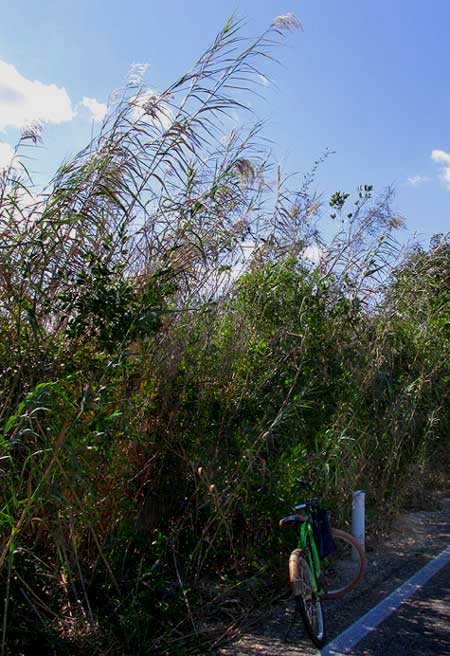
The seat on the bicycle is about one meter high, which makes the flowering head atop the tallest grass about five meters up. If you tilt the stem up so that it's vertical, then the grass is about 5.5m tall (18ft).
The grass's gracefully drooping, basketball-size, panicle-type flowering head is shown below:
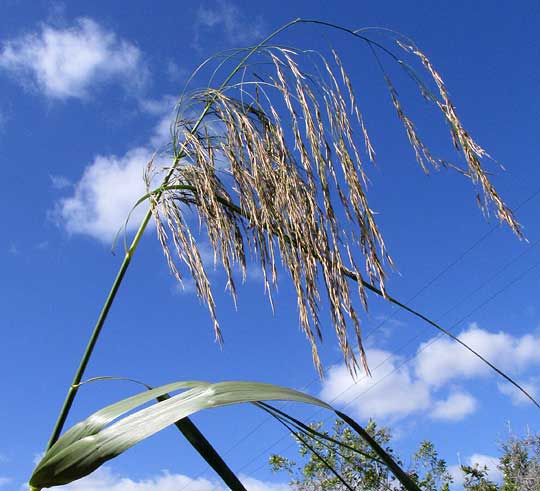
Inside the flowering head, stems of the first-order inflorescence divisions cluster along the rachis in irregular whorls, as shown below:

Each slender, sharp-pointed spikelet contains three or more florets, shown below:
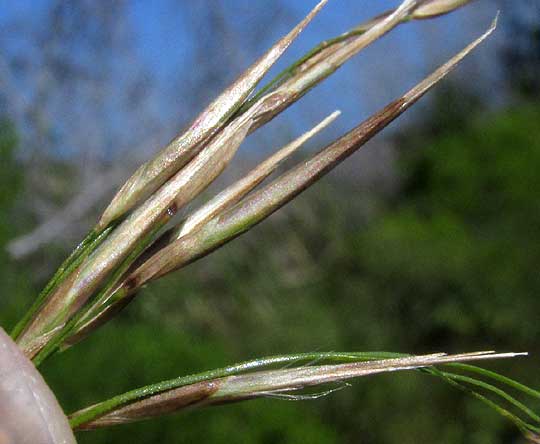
Lugules forming where blades connect with stems consist of a low, papery collar with a few long, very slender hairs, shown below:
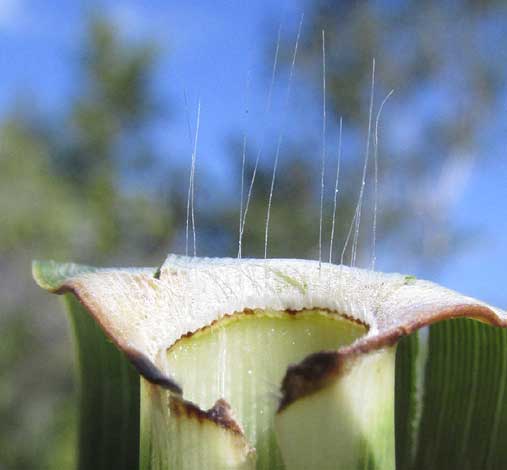
Probably you've noticed this grass species someplace not only because it's so conspicuous but also because it's one of the Earth's most widely distributed flowering plants. It's the Common Reed, PHRAGMITES AUSTRALIS, not to be confused with the Giant Reed, Arundo donax, we met back in Texas. The Giant Reed is most easily distinguished from the present Common Reed by leaves, which on the Giant Reed arise from the stem opposite one another, like a feather's barbs, as shown at www.backyardnature.net/n/h/arundo.htm.
Otherwise, Common Reed and Giant Reed are closely related and fairly similar to one another.
Current thought is that Common Reeds are native to both North America and Eurasia. Though New World and Old World plants are physically very similar, they behave differently. Old World plants introduced into much of the rest of the world have become extremely invasive, greatly expanding the species range over the last 150 years. They negatively impact native plants -- including native strains of their own species, the Common Reed -- and wildlife. The Old World invasive strain is hard to get rid of largely because during the growing season it emerges earlier than the native strains and is less susceptible to being eaten by insects.
In New England, native American strains of Common Reed appear to have already disappeared. Common Reed releases gallic acid, which is degraded by ultraviolet light into mesoxalic acid, and both of those compounds can be toxic to susceptible plants and seedlings. The introduced Common Reed strain also alters wetland hydrology, increases the potential for fire and reduces and degrades wetland wildlife habitat due in part to its very dense growth habit -- it can form large, single-species stands. Here I don't find it in extensive, single-species stands, but who knows what the wetland landscape will look like in a few years?
Whatever the case, and whatever ecological damage it may be doing as it becomes more established here, Common Reed is a handsome plant, especially when the wind blows it to one side and the sky behind it is bright, as seen below:
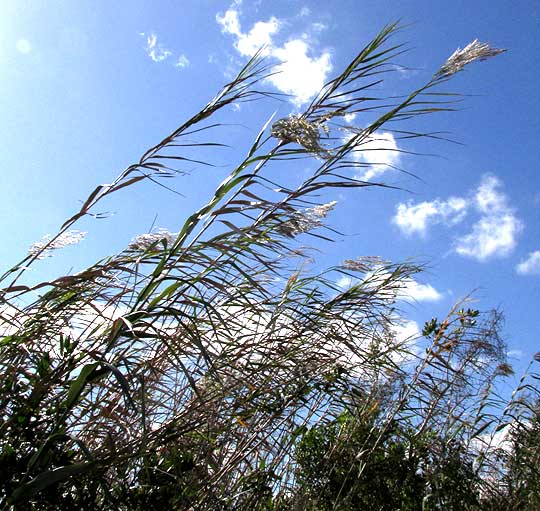
This is the reed Scandinavians traditionally have thatched their roofs with. In North America, indigenous people used stems of the native strain as arrow shafts, musical instruments, ceremonial objects, wove the stems the into mats, and even made cigarettes from the plant.